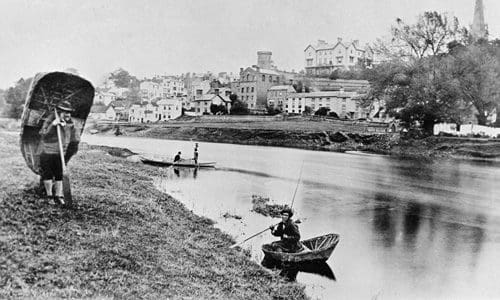An adventurous fellow called Luke Hughes paddled a coracle down the Wye from Wilton, near Ross on Wye, into the Bristol Channel, around the island of Lundy and back – all for a wager – so the local legend goes. This was in the 1730s and Luke was a trowman working the flat-bottomed river boats. He also kept an inn at Wilton, catering for the travelling tradesmen and trowmen using the river – effectively running the motorway services of the day.
It took Luke two weeks to settle the bet, as he paddled his coracle across the treacherous Severn to Lundy, which lies off the coast of north Devon. Considering the massive tidal range of the Severn, and how unstable these little boats are, this was an amazing feat! Although Wilton was far inland, the river linked it to the wider world and it was easier to get to Bristol by boat than to nearby towns by road. Bristol was the main market for goods from the riverside villages of the Wye and a regular port of call for the trows which Luke worked on. This lovely photo of two coracle men at Ross on Wye is from the collections of Monmouth Museum.
Thoracles, truckles, corbolas and cobles – are just some of the local names given to the coracle. This unusual fishing craft, usually just for one person, was once a common sight on the Wye. The earliest coracles were made of woven willow twigs covered in horse-hide, although later ones were ribbed with laths and covered with pitch canvas. A paddle was held in one hand, leaving the other hand free to fish. Sometimes pairs of coracles worked the river together. Being extremely light the fishermen would put the coracles on their shoulders to carry them home. These craft disappeared from the river after World War 1, but you can see a replica in St Arvans parish church and an original is kept at the Hereford Museum Resource Centre.


Coracles at Ross on Wye in the late 19th century.